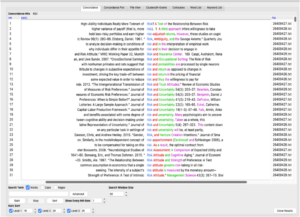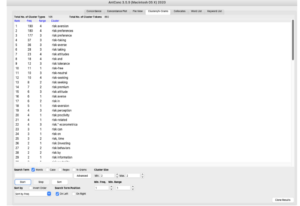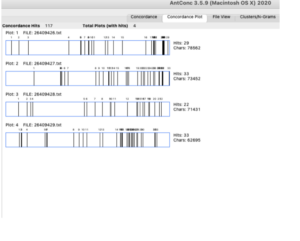In economics, risk preference refers to the tendency to choose an action
that involves a higher variance in potential monetary outcomes, relative to another option with a lower variance of outcomes. In other words, it’s the tendency to choose a risky or riskless option. Physiologically it is defined as the attitude people hold towards risks. Economist have a shared concept that, for the most part, people dislike risk. The strict definition of preference stability in economics implies that individual risk preferences are constant over time. The definition of stability used in psychology implies high levels of rank-order stability across individuals and not that the individual will maintain the same level of a trait over time. The purpose of this research is to explore the extent to which both psychologists and economists use risk preferences to explain individual differences in people’s appetite for risk. I choose to go with this topic because the selected article will help me to analyze how different language are used in economics and physiology to define risk preference and the factor affecting it.
This project will set out to answer four research questions mentioned below: –
- What are the top-10 most frequently used academic words in my selected journal articles?
- What are the percentages of AWL, GSL first 1000 words, and second 1000 words in my own essays and selected journal articles?
- How many times do keyword risk occurs in this corpus? List 5 words that are used most frequently after the word “risk”.
- Are first-person pronouns used in selected journals? If so, how many articles in this corpus used first person pronouns?
Expectations
I do have some expectations for research. I would expect the percentage of AWL Words is about 12% to 15%, and that of GSL is about 70%. The selected articles are professionally published writings; therefore, the vocabulary should show formality, which means that the AWL percentage cannot be too low.
By using a corpus analysis tool, I expect to get an exact number of word tokens and word type in my corpus. I will also get to know how many AWL words are used and the number of first 1000 words in GSL and words from the second 1000 words. This will help me to calculate the percentage of AWL and GSL in my selected text. Likewise, I expect to get the number of times words like economist, price, risk, ability, policy and decision are used in the corpus by using word lists. This will help me to analyze how often words are used in the context. I believe that these articles will not use first pronouns frequently because first-person pronouns make the interpretation and analysis of events subjective and biased. Apart from that, I will use the Cluster/ N-Grams function to get the frequency of words or phrases that exist after “economic” and “physiological”. I expect to get hundreds of words or phrases after “economic” and “physiological” as my article is based on how risk preference is viewed from an economic and physiological perspective.
Research Procedure
At first, I spent a couple of hours gathering suitable articles for my project as it is one of the most crucial parts to analyze the project. In order to choose a suitable article for my journal, I browsed the Lafayette College Library website and started looking into journals. I used the Academic Reading Resources to select a suitable journal for economics. I decided to go with Journal of Economics Perspectives because of its reputation and because it has really good articles with high impact factors. I selected “journal title” from the dropdown menu and searched for the word “Journal of Economics Perspectives.” However, some of the journals do not have free access, so it took me a long time to select the journal. After selecting the content, I converted the PDF to txt and imported it into the corpus tool. Then, I used different functions from the toolkit to collect data to answer my four research questions.
At last, I compared the obtained data with my expectations and made conclusions.
Corpus Description
I decided to use four texts from the journal of “Economic Perspectives” for my corpus. The title of an article that I choose for my corpus are “Modeling Risk Aversion in Economics”, “On the Relationship between Cognitive Ability and Risk Preference”, “Are Risk Preferences Stable? and “Risk Preference: A View from Psychology”. The reason behind choosing this journal is because of the reputation of the journal itself. The Journal of Economic Perspectives has been publishing since 1980 and has a huge number of readers from all around the worlds as it fills the gap between the general interest press and academic economics journals. There is no doubt about its academic background. I think choosing four different articles regarding risk preference from this journal will allow me to analyze the ability of an individual to take a risk and the factors that affect risk preference.
Corpus Analysis Tools
I am planning to use AntConc, a freeware corpus analysis toolkit for concordance and text analysis developed by a Professor at Waseda University
Japan. I am planning to use Word List Function to find the word types and word token of my selected text. I will find the top 10 most used AWL words in the corpus by using the Word List function from tool preferences. Also, I will find the total number of words, word token and number of AWL, GSL word from the corpus to calculate the percentages of AWL, GSL first 1000 words, and second 1000 words in my selected journal articles. I will run a function by going to Concordance to find how many times the word risk is used in my selected journal. I will use the Concordance Plot function, typing words like “I”, “our”, and “we” to find first-person pronouns used in a journal.
Findings and Discussion
The Word List function in AntConc helped me find the top-10 most frequently used academic words in my selected journal articles. The analysis found that the top 10 most used words were: economic (214 times), journal (178 times), utility (137 times), economics (95 times), stability (94 times), individual (83 times), financial (83 times), phycology (78 times), evidence (73 times) and individuals (72 times). The result of the top-10 most frequently used academic words in my selected journal articles is shown in Fig 1 below.

The results of the analysis into my second question, which inquired most frequently used AWL Words, found the following results: the number of word tokens is 40954, and the number of word types is 4479.There are 5373 AWL, 24601 words from the first 1000 words in GSL, and 3370 words from the second 1000 words in GSL. Thus, the percentage of AWL in my selected texts is 13.11 % and the portion of GSL is 68.29 and 18% are technical words. This makes my assumption correct.
For the third question, I went to the concordance tab and typed the word “risk” to find how many times the word “risk” was used in my corpus. Since my articles were based on analyzing risk preference using economics and psychology, the word was used quite often in the corpus. It was used 892 times in different situations to analyze risk preferences. The word appeared 224 times in plot1, 210 in plot2, 295 times in plot 3 and 163 times in plot 4. Likewise, I used the Cluster/N-Grams function to find a list of 5 words that are used most frequently after the word “risk”. Those words were: risk aversion (190 times), risk preferences (180 times), risk preference (177 times), risk-taking (37 times) and risk averse (36 times).


All four articles used the first pronoun very often as shown in the plot chart below (Fig 2). Plot 3 has the lowest frequency but it still has 22 hits. The first-person usage appears most often in the second and third plot. The plot shows that in economics and physiology the use of the first person is not very rare. It might be because most of the authors are economists and their words are authoritative. The usage of first-person pronouns can also close the distance with readers to explain complex models through examples in daily lives.

Conclusion
While working on this project, I got an idea to analyze the difference in the choice of words in economic articles under different circumstances and academic writing laws by analyzing four different articles from the journal “Journal of Economic Perspectives”. By using AntConc as a corpus tool, I obtained the data efficiently and answered the four research questions. The percentages of AWL and GSL were close to my assumptions. After finishing the first draft, I imported it into Ant Conc to see the percentage of AWL and GSL of my own paper. Both results were within the standard range, which means my academic writing ability is much better than I expected. However, I was surprised by the frequency of the first-person pronouns that appeared in academic writings. I have learned that, in many cases, the usage of first-person can narrow the gap between authors and readers, aiming to simplify the complex economic concepts. Also analyzing the number of times word “risk” appeared in the corpus helped me to get insight on how the words are used in the context to provide various meanings within the journal.
The research on these four questions has brought me a deeper understanding of academic writing and helped me figure out the word choice before and during the pandemic. I will pay more attention to the wording in different settings, and I am willing to use the first-person if applicable. I also realized how much difference the word can be in different settings. This study has a drawback that is important to note. I left some mathematical and number symbols in the texts because removing them would have resulted in an overestimation of the word tokens. The AWL and GSL percentages I received might not be entirely accurate. Next time, I’ll make an effort to keep such things from happening.
References
Dohmen, Thomas, et al. “On the relationship between cognitive ability and risk preference.” Journal of Economic Perspectives 32.2 (2018): 115-34.
Mata, Rui, et al. “Risk preference: A view from psychology.” Journal of Economic Perspectives 32.2 (2018): 155-72
O’Donoghue, Ted, and Jason Somerville. “Modeling risk aversion in economics.” Journal of Economic Perspectives 32.2 (2018): 91-114.
Schildberg-Hörisch, Hannah. “Are risk preferences stable?” Journal of Economic Perspectives 32.2 (2018): 135-54.
